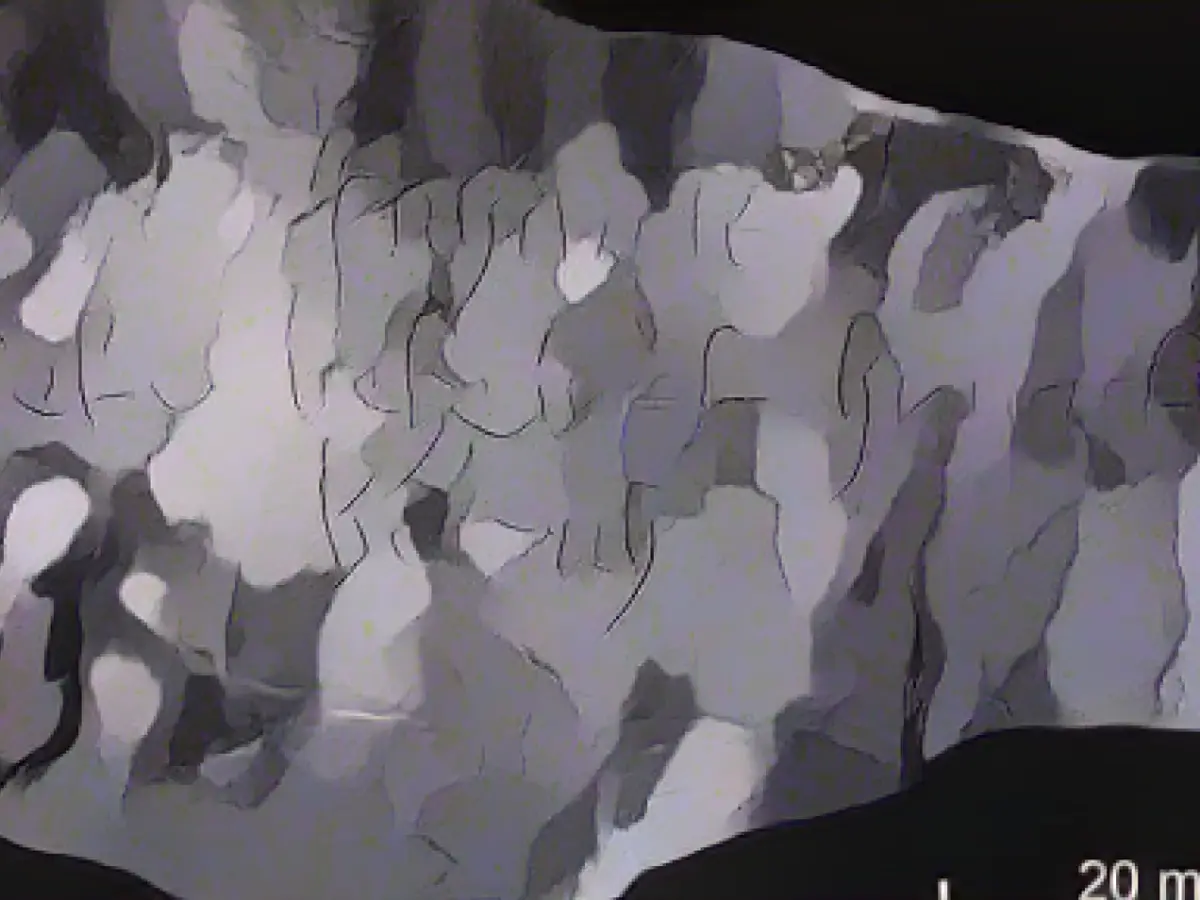Uncovering Ancient Family Ties: 4,200-Year-Old Grave Unearthed in Saxony-Anhalt
Breaking news! Archaeologists have unearthed a heartwarming discovery from the Bell Beaker culture era in Saxony-Anhalt, Germany. Beneath the soil near Domnitz, they found a 4,200-year-old family grave housing a 25-year-old man and his two offspring, aged nearly 10 and less than 5 years old. The project manager and archaeologist, Susanne Friederich, shared this fascinating find at the excavation site on Tuesday.
Emotions ran high as team members described this collective burial, with the man peacefully lying on his left side, facing the east, while the elder child found beside him was bedecked with a simple necklace made from perforated bone plate and shells. Instead of the traditional separation between adults and children, this family chose to rest together, with the older child’s legs positioned above the man's, and the man sweetly reaching out his arm to cradle the child once more. The local excavation manager, Christian Papst, couldn’t help but highlight the powerful display of love and unity in this touching family narrative.
The ancient grave was partially fortified with sandstone and porphyry slabs, surrounding the precious remains. Just on the sides, archaeologists discovered another burial site of a young child, nestled within a round pit, surrounded by remnants of an arrowhead and cow bones. Another male grave contained a flint blade, hinting at different cultural practices within this period. A fourth grave, unfortunately, was found to be robbed in antiquity, leaving only three ceramic vessels behind.
Archaeological excavations are currently underway in preparation for the expansion of the SuedOstLink direct current power line. With approximately 150 kilometers set to cross Saxony-Anhalt, archaeologists will continue their research until 2025, aiming to preserve and reveal more about the area’s rich cultural history.
The Bell Beaker culture thrived across Western Europe during the 3rd millennium BCE, leaving behind valuable insights into their burial practices and family life. Grave goods were minimal, and the placement of the deceased was often gender-specific, with men lying on their left sides and women to their right.
The recent excavation in Domnitz is an important reminder of this timeless period and has the potential to reveal more about the lives and customs of the era's children. Uncovering the secrets and stories within these ancient ground remains will undoubtedly contribute to future archaeological research, shedding light on a period that shaped human civilization millions of years ago.
Related Reads:
[1] Beaker People (Bell Beaker culture) History, How Stuff Works,
[2] Bell Beaker Culture - Ancient DNA, Ancient Origins,
[3] The Bell Beaker Culture, Britannica,
[4] Bell Beaker, Encyclopædia Britannica,
[5] Bell Beaker Civilization, Ancient Origins,








